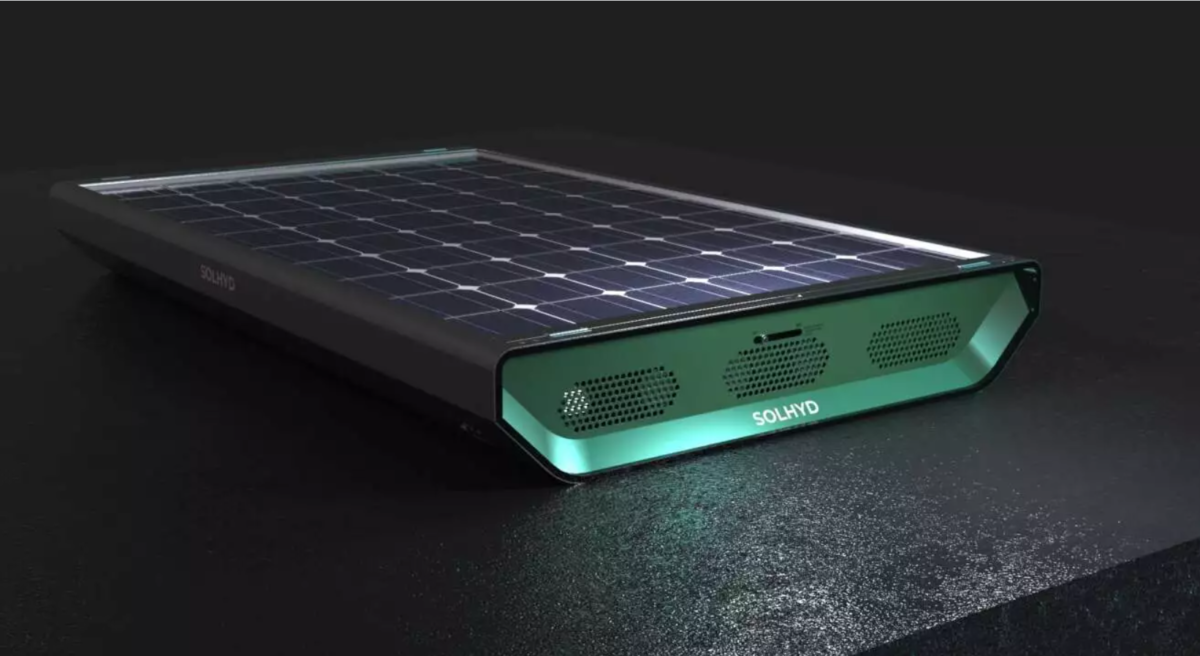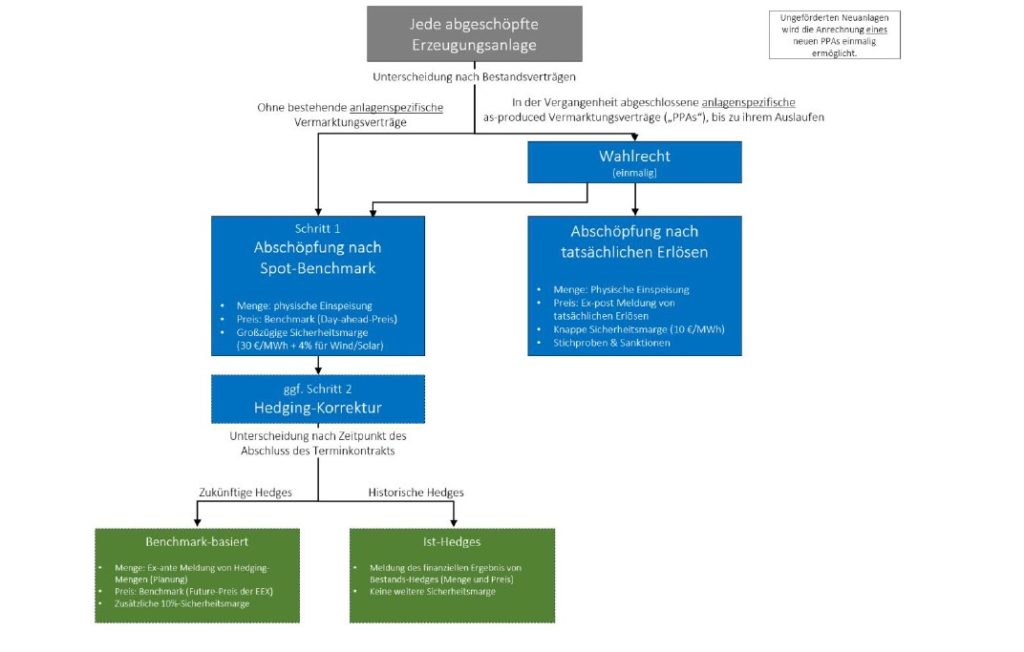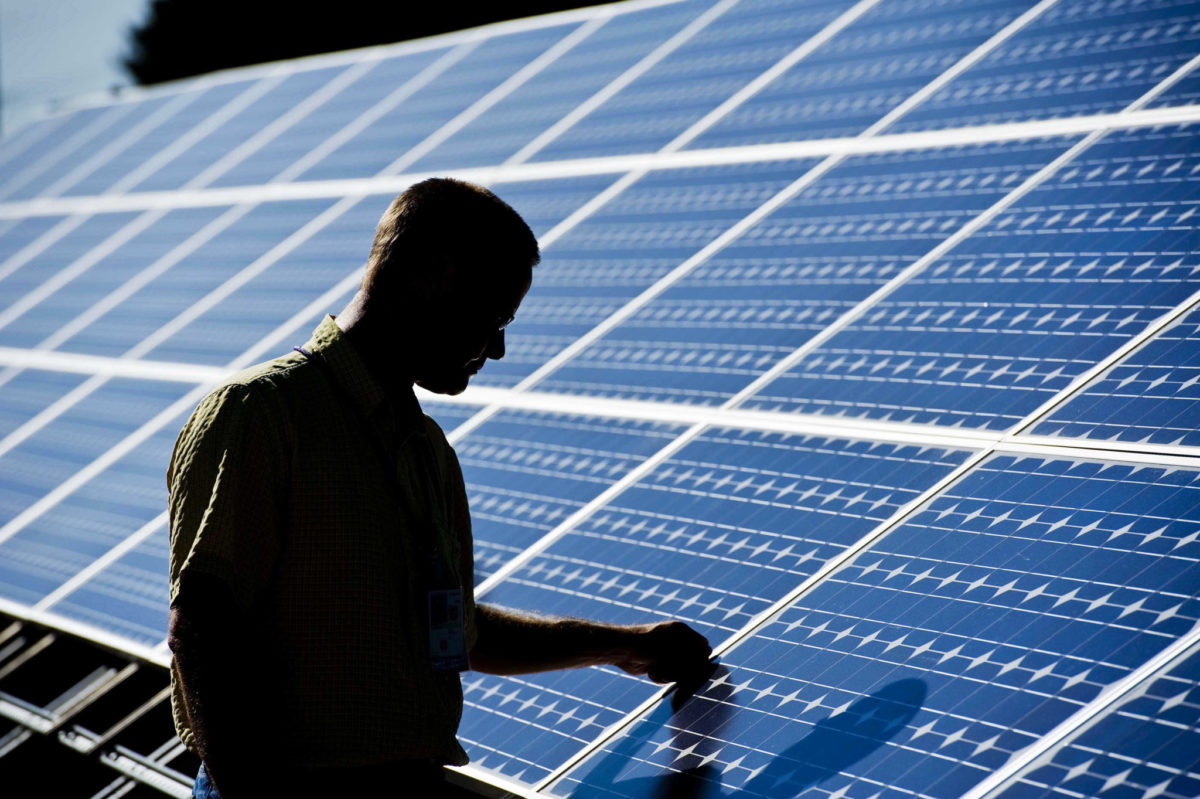https://www.pv-magazine.com/2022/11/09/hydrogen-producing-rooftop-solar-panels-nearing-commercialization/
Hydrogen-producing rooftop solar panels nearing commercialization

The researchers have been fine-tuning the technology for over a decade. The hand-built prototypes were then cast into an attractive industrial design by Comate Engineering & Design.
Image: Comate
KU Leuven researchers in Belgium have created a hydrogen panel that directly converts water vapor from the air into hydrogen gas, with the help of sunlight. They claim it produces 250 liters of hydrogen per day, at an efficiency of 15%. They are developing it under the Solhyd project, which is now in a transition phase from research to spinoff.
In a nutshell, hydrogen panels are modules that use solar energy to split water molecules and produce hydrogen gas. This means only the most arid places on Earth are too dry for hydrogen panels to work efficiently. They are akin to classical solar modules, but instead of an electric cable, they are connected via gas tubes.
Specifically, electricity is produced by the top layer solar panel, with a system of tubes underneath, where the hydrogen is produced from water molecules extracted directly from the air using a membrane.
“Solhyd hydrogen panels are compatible with most commercial modern PV modules, which are directly plugged into our system. This way, we can benefit from the ongoing developments and cost reductions in the PV industry,” KU Leuven researcher Jan Rongé told pv magazine. “To further enhance this synergy, Solhyd hydrogen panels are compatible with common PV mounting structures.”
The researchers described the hydrogen panel as small-scale, modular, and ideal for decentralized production. They estimated that 20 of the panels could supply electricity and heat for a well-insulated house with a heat pump all winter long. When installed alongside a solar thermal collector and traditional solar panels, hydrogen panels could help heat homes and provide electricity throughout the year.
“The hydrogen panels themselves do not store hydrogen and work at very low pressure. This has several safety and cost benefits. The hydrogen is collected centrally from the hydrogen panel plant, and then compressed, if needed,” Rongé said. “Hydrogen can be stored indefinitely in compressed form. Of course, certain applications do not require compression, or will use other means of storage.”
Popular content
Hydrogen produced by Solhyd panels can be used in a wide range of applications, including mobility.
“In the shorter term, we are mostly targeting mid-sized applications, such as backup power, logistics, heavy transport, but also providing energy in the Global South,” said Rongé. “Later, you could think of anything from large scale ammonia production down to small-scale off-grid systems.”
The researchers said they foresee a similar system-price cost curve like the one seen in PV, and noted that they use non-precious materials to keep the hydrogen panels affordable. They have tested several prototypes since the project launch in 2011 and are ready to launch industrial production of hydrogen panels.
In September, the Solhyd project moved from the university labs to a new 350 square-meter production space close to the Belgian town of Leuven, where pilot production lines were established with the help of Flemish government funding. Initially, the team will produce a few dozen hydrogen panels for small-scale pilot projects. But by 2026, the team expects to scale up production to 5,000 panels a year.
“At this moment we expect that the product will be commercially available from 2026 onwards,” Rongé said. “When we achieve mass production, the price will be close to that of PV modules today.”
This content is protected by copyright and may not be reused. If you want to cooperate with us and would like to reuse some of our content, please contact: editors@pv-magazine.com.




